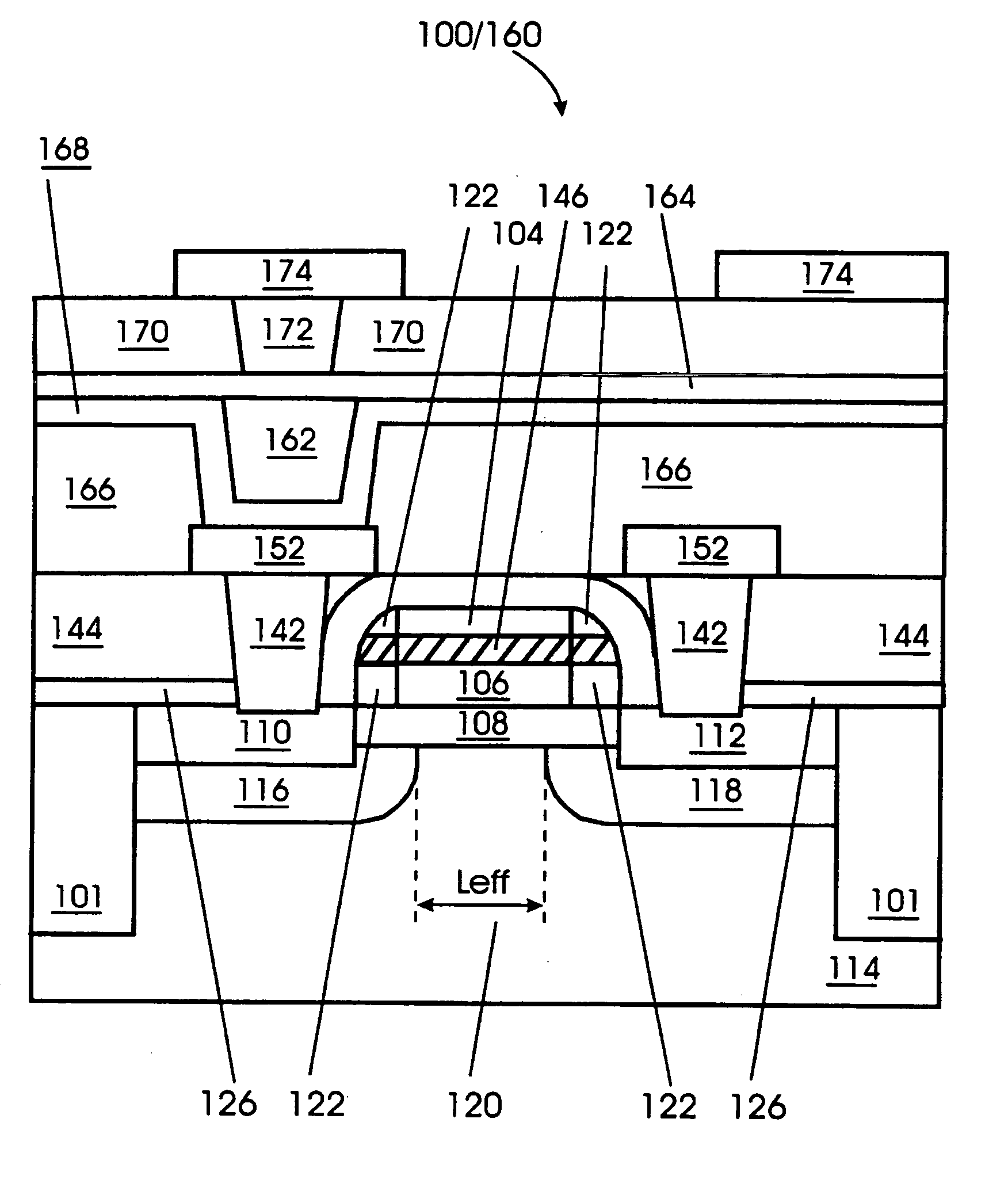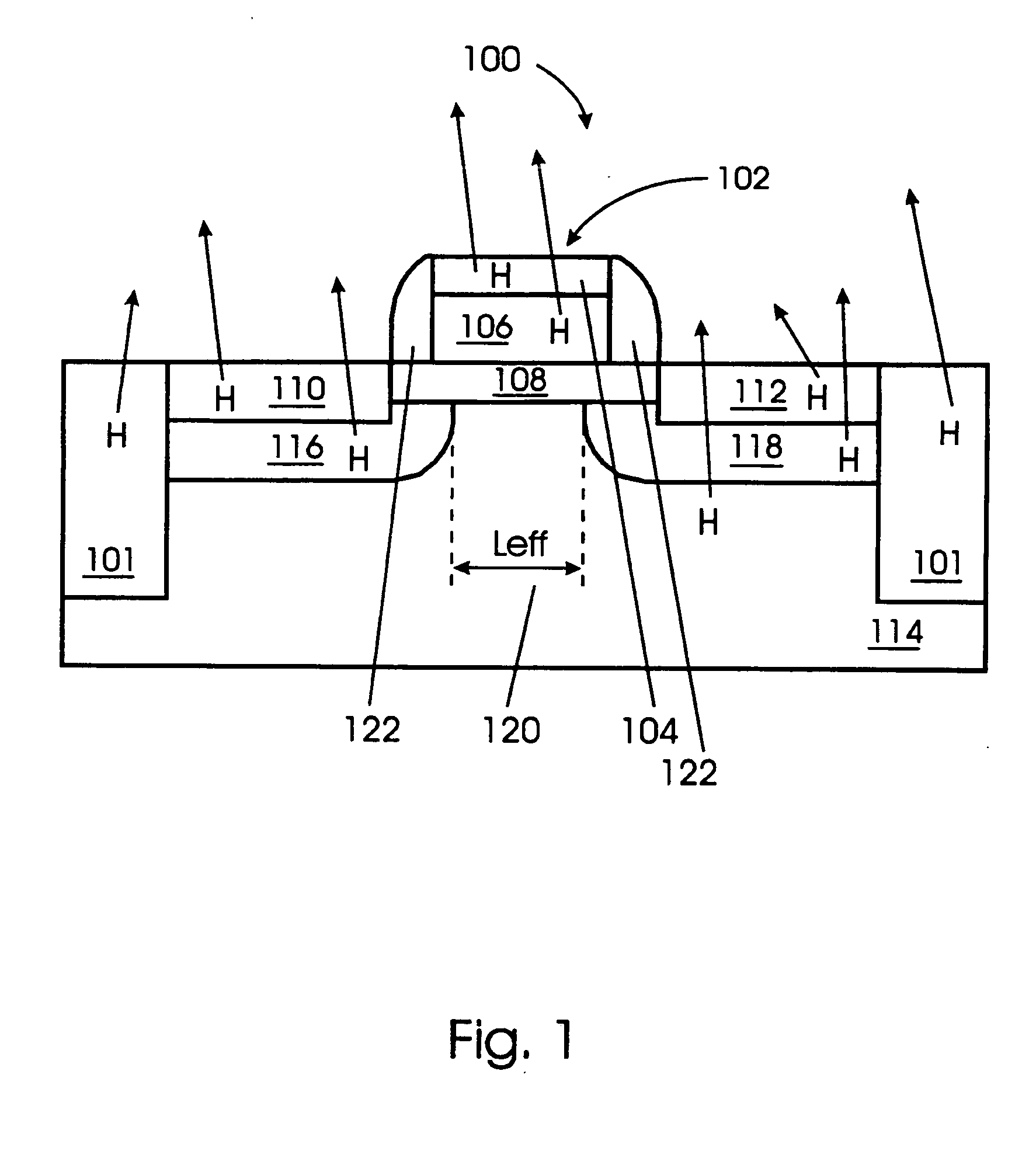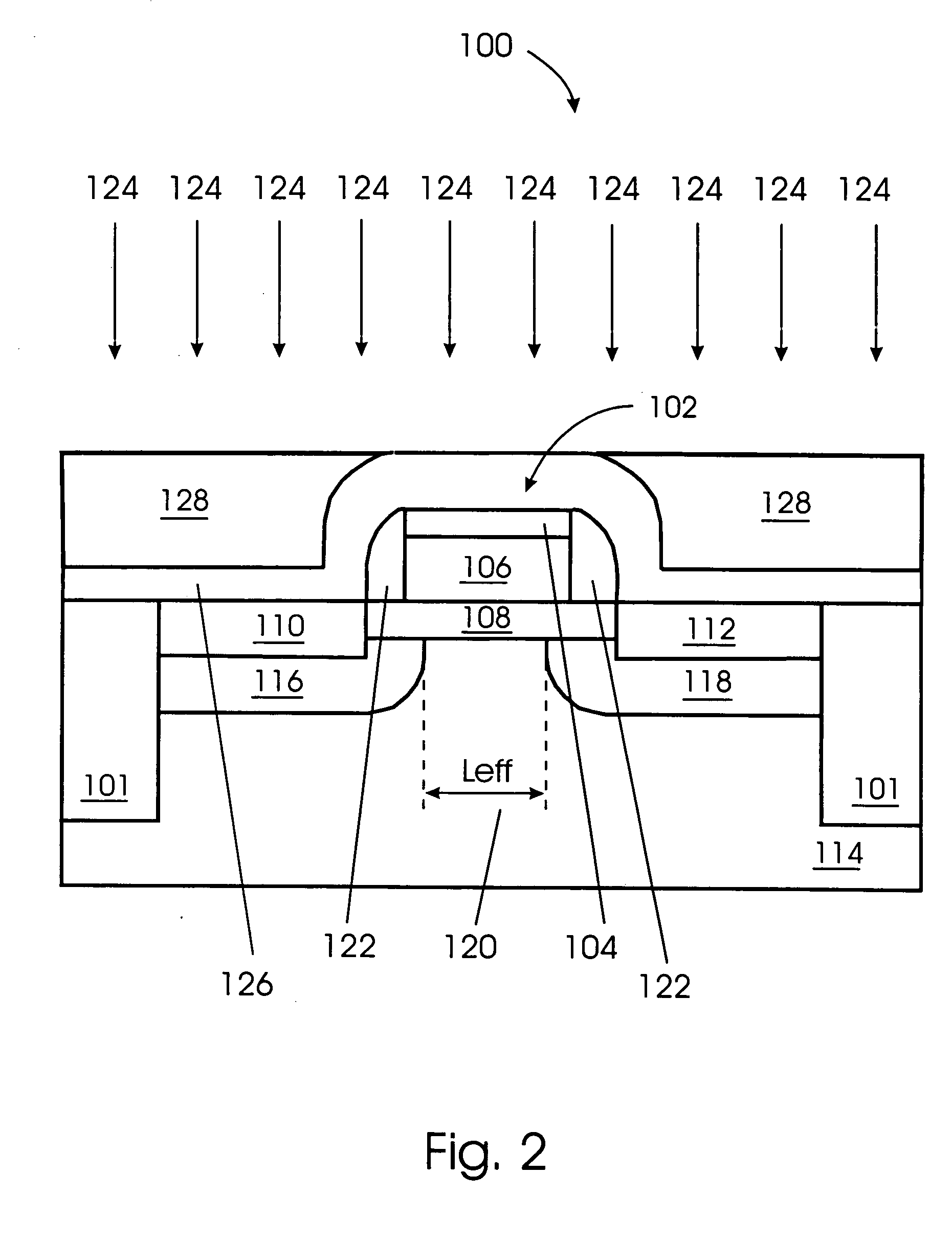Implantation of deuterium in MOS and DRAM devices
a technology of mos and dram, which is applied in the direction of semiconductor devices, basic electric elements, electrical apparatus, etc., can solve the problems of reducing channel conductance, affecting the charge transport characteristics of semiconductor devices, and shifting threshold voltage, so as to improve the performance and reliability of mosfet devices
- Summary
- Abstract
- Description
- Claims
- Application Information
AI Technical Summary
Benefits of technology
Problems solved by technology
Method used
Image
Examples
Embodiment Construction
[0036] Referring to the Figures by characters of reference, FIG. 1 illustrates a Metal Oxide Semiconductor Field Effect Transistor (MOSFET) structure at the process stage where the formation of the spacer 122 has been completed. Shallow Trench Isolation (STI) 101 is used to isolate MOSFET 100 from other devices. STI 101 is typically composed of a dielectric material, such as SiO2. MOSFET 100 is formed having a gate stack 102 that includes a gate silicide 104, a poly-silicon gate 106, and a gate dielectric 108. Heavily doped source-drain regions 110 and 112 are formed in substrate 114 adjacent to gate stack 102. Lightly doped source-drain regions 116 and 118 are illustrated below source-drain regions 110 and 112. Between source-drain regions 110 and 112 lies channel 120 formed by applying a voltage across gate stack 102. An exemplary material for substrate 114 is silicon. An exemplary material for gate dielectric 108 is SiO2. Other materials for substrate 114 and gate dielectric 108 ...
PUM
 Login to View More
Login to View More Abstract
Description
Claims
Application Information
 Login to View More
Login to View More - R&D
- Intellectual Property
- Life Sciences
- Materials
- Tech Scout
- Unparalleled Data Quality
- Higher Quality Content
- 60% Fewer Hallucinations
Browse by: Latest US Patents, China's latest patents, Technical Efficacy Thesaurus, Application Domain, Technology Topic, Popular Technical Reports.
© 2025 PatSnap. All rights reserved.Legal|Privacy policy|Modern Slavery Act Transparency Statement|Sitemap|About US| Contact US: help@patsnap.com



